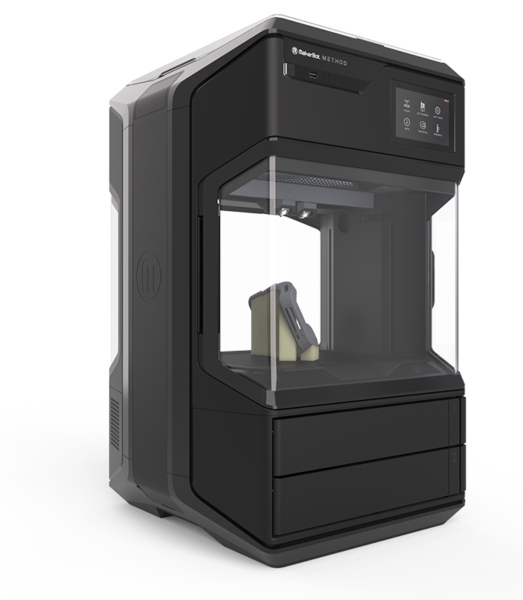Editor’s Pick: Heavyweight 3D Print Technologies Designed for Desktop
MakerBot's new 3D printer deploys Stratasys industrial technologies for single designers and engineers.

MakerBot reports that its new Method delivers additive manufacturing technologies once available only on industrial units to the individual design and engineering desktop. Image courtesy of MakerBot Industries LLC.
Latest News
January 23, 2019
Dear DE Reader:
Growing up 9 miles from Times Square we had a high compliment we'd drop on big things that came in little packages: Just like New York, but smaller. That one-liner seems to aptly summarize today's Editor's Pick of the Week.

Mid-December, MakerBot, the Brooklyn developer of desktop 3D printing systems, announced the upcoming availability of its Method FDM (Fused Deposition Modeling) additive manufacturing system for designers and engineers. The time is nigh, and it's worth knowing about.
How come? Size and technology. More on the tech stuff in a bit.
The Method will make advanced or what-if concepts and functional test part prototypes. It's sized to fit both your desktop and wallet. Its rigid metal housing measures 17.2x16.3x25.6 in. (LxWxH). And it'll run you about $6,500 when generally available; less if you pre-order.
Key is that the Method 3D printer leverages industrial technologies from Stratasys, MakerBot's parent company. What that means for you is that it has features you could only get on industrial 3D printers. For example, a circulating heated chamber, dual performance extruders and sensor-equipped dry-sealed material bays to minimize moisture absorption and let you know if there's an environment issue.
The circulating heated chamber controls layer temperature and quality. It creates a full heat immersion environment during the entire print run and allows controlled material cooling, which should improve layer adhesion and part strength.
The dual extruders are interesting. MakerBot says they can handle high-speed 3D printing without compromising part accuracy. They have a bunch of smart sensors monitoring things and a dual-drive gear system that steadily feeds materials into the hot end, which delivers consistent and repeatable results with ± 0.2 mm dimensional accuracy.
Industrial technology also means there's PVA (polyvinyl alcohol) water-soluble support material. That means you can design with geometric abandon because you do not fiddle around breaking off supports. No splashing nasty solvents around either.
The parts aren't dinky either: The single-extrusion build volume is 7.5x7.5x7.75 in. (LxWxH); dual extrusion is 6.0x7.5x7.75 in. Layer resolution ranges from 20 to 400 microns.
There's more on materials and the Method 3D printer's industrial technologies in today's write-up. Make sure to click and watch the intro video then browse the Method's dedicated web page (hint: hit the features tab). It should take no more than a New York minute to see that this is not your typical desktop 3D printer.
Thanks, Pal. – Lockwood
Anthony J. Lockwood
Editor at Large, DE
More MakerBot Coverage
Subscribe to our FREE magazine, FREE email newsletters or both!
Latest News
About the Author
Anthony J. Lockwood is Digital Engineering’s founding editor. He is now retired. Contact him via [email protected].
Follow DE





